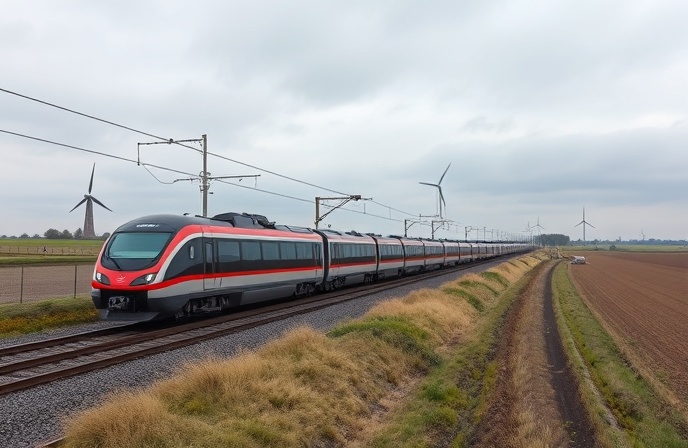Singapore’s CRL: Defu & Tampines North Stations

This article delves into the significant infrastructure development underway in Singapore with the construction of two new stations on the Cross Island Line (CRL), a crucial addition to the country’s expanding Mass Rapid Transit (MRT) network. The Land Transport Authority (LTA) has recently awarded substantial contracts for the design and construction of the Defu and Tampines North stations, part of the Cross Island Line Phase 1 (CRL1). This project highlights not only the substantial financial investment involved, totaling S$864 million (approximately US$641.9 million), but also the complex engineering challenges presented by the unique geological conditions of the construction sites. The successful completion of this project will significantly enhance connectivity and accessibility for residents and businesses in the eastern and northeastern regions of Singapore, impacting daily commutes and overall urban development. We will examine the awarded contracts, the associated engineering complexities, the project’s overall significance to Singapore’s transportation infrastructure, and the potential implications for future expansion of the MRT system.
Contract Awards and Project Scope
The Land Transport Authority (LTA) awarded two substantial contracts for the design and construction of the Defu and Tampines North stations. The contract for Defu station and associated tunnels, valued at S$467 million (approximately US$346.9 million), was awarded to a joint venture (JV) between Gamuda Berhad Singapore Branch and Wai Fong Construction. Simultaneously, China Communications Construction Company Limited (Singapore Branch) secured the contract for Tampines North station and tunnels, worth approximately S$397 million (approximately US$294.9 million). These contracts encompass the complete design and construction process, from initial planning and geotechnical investigations to the final completion and handover of the fully operational stations. The precise scope of work includes not only the construction of the above-ground station structures but also the excavation of tunnels linking these stations to the rest of the CRL1 network.
Geotechnical Challenges and Mitigation Strategies
The construction sites for both Defu and Tampines North stations present significant geotechnical challenges. The ground conditions are characterized by thick, soft layers of marine clay and a soil-like material consisting of sandy and silty clay. These conditions necessitate specialized engineering solutions to ensure the stability of the excavations and surrounding structures. The LTA has emphasized the importance of implementing robust safety measures during earth retaining and stabilizing structure works and deep excavation to mitigate risks associated with ground instability. This includes the likely use of advanced ground improvement techniques, such as soil stabilization and deep ground anchoring, to reinforce the ground and prevent settlement or collapse during construction. Careful monitoring of ground movement using advanced instrumentation will also be crucial.
Significance of the Cross Island Line (CRL)
The Cross Island Line (CRL) is a significant addition to Singapore’s existing MRT network. Designed as Singapore’s eighth MRT line, the CRL, when completed, will significantly improve connectivity between the eastern, northeastern, and western corridors of the island, currently underserved by existing lines. CRL1, the first phase, comprises a 29km stretch with 12 stations, extending from Aviation Park to Bright Hill. This line will serve various residential and industrial areas, including Loyang, Tampines, Pasir Ris, Defu, Hougang, Serangoon North, and Ang Mo Kio, relieving congestion on existing lines and providing more efficient transportation options for commuters. The project’s strategic importance lies in its ability to integrate previously less-connected regions, fostering economic growth and improving the quality of life for residents.
Project Timeline and Future Implications
Construction work on both Defu and Tampines North stations is slated to begin in the second quarter of 2022. The CRL1 is scheduled for commissioning in 2030. The successful completion of this project will not only enhance Singapore’s public transportation infrastructure but will also serve as a benchmark for future MRT line developments. The experience gained from tackling the challenging geotechnical conditions encountered during this phase will undoubtedly inform future design and construction strategies for subsequent phases of the CRL and other MRT projects. The project’s success will also demonstrate Singapore’s commitment to investing in cutting-edge technologies and engineering solutions to overcome challenges and deliver efficient, reliable, and safe public transport systems. The broader implications include potential for improved property values in areas served by the new line and a positive impact on overall urban development.
Conclusion
The award of contracts for the Defu and Tampines North stations marks a significant milestone in the development of Singapore’s Cross Island Line (CRL), a vital infrastructure project aimed at enhancing connectivity and improving the lives of its citizens. The S$864 million investment reflects the project’s importance and the government’s commitment to modernizing the nation’s public transportation network. The challenging geotechnical conditions, characterized by soft marine clay and sandy-silty clay, necessitate careful planning and execution, requiring specialized engineering solutions to ensure ground stability and worker safety. The successful completion of these stations, along with the entire CRL1, scheduled for 2030, will result in improved connectivity between previously less-accessible areas, easing congestion on existing lines, boosting economic activity, and increasing the quality of life for commuters and residents. This project serves as a testament to Singapore’s commitment to sustainable and efficient urban planning and further cements its reputation as a global leader in infrastructure development. The lessons learned from overcoming the unique geotechnical challenges encountered in this project will be invaluable for future large-scale infrastructure projects in Singapore and beyond, providing a valuable knowledge base for future generations of engineers and urban planners. The successful execution of this project is crucial not only for Singapore’s present transportation needs, but also forms the foundation for a resilient and future-proof public transportation system, ready to support the country’s continued growth and development.




